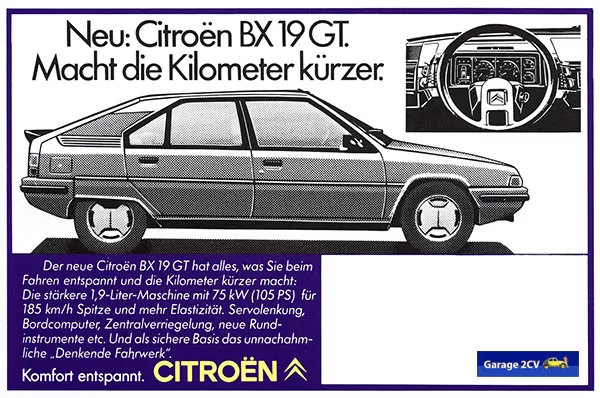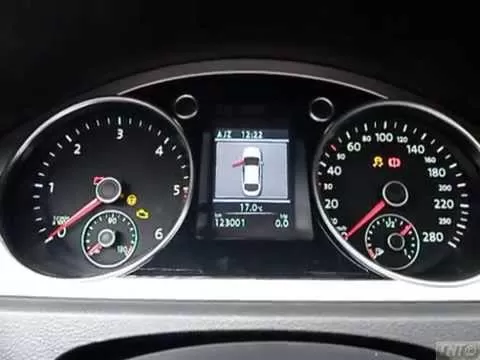
Citroen BX - courage pays off
The French companies are distinguished by a stylistic boldness, which can be found in vain in the extremely practical Germans, who produce the most popular cars in most segments. Sometimes the futurism of French stylists turns into financial ruin, sometimes it leads to success.
Over the past ten years, there have probably been more failures - Citroen C6 is selling poorly, no one wanted to buy Renault Avantime, and Vel Satis is not much better, having not found a place in the heavy E-segment.
However, looking at the history of the automotive industry, we can find some commercial successes that were very bold when it came to design. One of them is undoubtedly the Citroen BX, produced from 1982 to 1994. During this time, more than 2,3 million units of this model were produced, which is more than the Baby Merca (W201), which was still a bestseller.
However, the competitor of the BX was not the Mercedes 190, but the Audi 80, Ford Sierra, Alfa Romeo 33, Peugeot 305 or Renault 18. Against this background, the BX looked like a car from the future - both in terms of body shape and interior design.
Citroen even tried to position the BX19 GTi as a competitor to the BMW 320i. It was not an easy task, but the BX had several advantages - most notably, a powerful 127 hp engine. (BX19 GTi) or 160 HP (1.9 GTi 16v), which guaranteed acceleration to 100 km / h in 8 - 9 seconds. , and richer standard equipment, including, among others, . power steering, ABS, sunroof and power windows. However, it was not the most powerful BX to come out of the factory. The limited series was the BX 4 TC (1985) with a broken 2.1 unit with a power of 203 hp. The performance was excellent: the maximum speed exceeded 220 km / h, and acceleration to hundreds took about 7,5 seconds. The car was made in only 200 copies, which Citroen had to produce in order to be able to compete with this model in the Group B rally. Despite this, the company was not able to sell all the copies. The high-performance version, thanks to a more powerful turbocharger, reached 380 hp.
Although today the VX is not respected and has a reputation for being trouble-free, during its production period it impressed not only with its appearance, but also with its good value for money, equipment and a wide range of drive units. In addition to top-end engines that allow you to accelerate to over 200 km / h, units with power from 55 hp were offered. Versions with 1,1 liter engines were sold only in some markets, but the 1.4 and 1.6 units were popular throughout Europe. People who preferred efficiency to productivity and work culture could choose 1.7 and 1.9 diesel engines with power from 61 to 90 hp. A small number of BXs were equipped with all-wheel drive.
The figure (1985) deserves special attention among the numerous modifications of the BX model, which are distinguished by a modern, digital instrument panel connected to an on-board computer that informs about fuel level, power reserve, open doors, etc. Due to the fact that there were only several thousand, this is an exemplary candidate for newlyweds.
There is one starting point in the history of the model - this is 1986, when a thorough modernization was carried out and production of a new model began. For the first two years, a transitional version was produced, and since 1988 it was a second-generation model with all the changes. The car featured different bumpers, fenders, headlights and a redesigned dashboard. The second generation was also better protected against corrosion, including in terms of the strength of the hydropneumatic suspension system.
Today, the Citroen BX is extremely rare on the secondary market, but those that do appear can usually be bought for 1,5-2 thousand zlotys. Many of the oldest cars have already lost their spirit in landfills. It can be assumed that this is due, in particular, to a cumbersome operation. People who do not like French motorization are promoting the theory that hydropneumatic suspension is so dangerous that almost every Citroen marks its area with LHM fluid. However, the truth is not so terrible. The suspension requires more attention than the simple solutions known from competitors, but it is a relatively simple design requiring filter and fluid changes every tens of thousands of miles. After a dozen or so years, the LHM hydraulic suspension can play tricks and fluid lines may need to be replaced and the fluid itself replenished, which costs about PLN 25 per liter. So it won't be a huge cost as long as we take care of the vehicle. But working pneumatics will make it very comfortable to overcome Polish roads. I am sure that at this price we will not find a machine that guarantees more comfortable overcoming bumps than the BX.
Sole. Citroen
